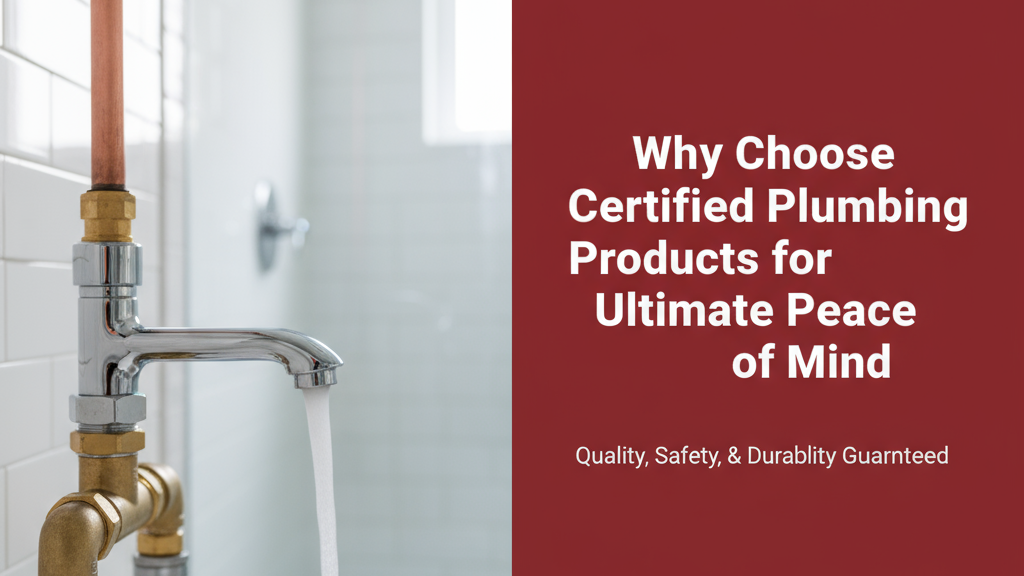The Importance of Certified Plumbing Products
When selecting plumbing materials for your home or project, certified products offer more than just compliance—they provide assurance of performance and safety. In India’s varied climate conditions, from monsoon rains to extreme heat, plumbing systems face unique challenges that demand rigorously tested solutions.
Certification marks indicate that products have undergone independent testing against recognised standards for:
- Material durability under thermal stress and UV exposure
- Joint integrity under pressure fluctuations
- Water safety with no leaching of harmful compounds
- Consistent dimensional accuracy for reliable installations
How Certification Ensures Quality and Safety
Indian Standard (ISI/BIS) certifications for plumbing products verify critical performance aspects through laboratory tests and factory inspections. For pipes and fittings, this typically includes:
| Test Parameter | Typical Certification Requirements |
|---|---|
| Hydrostatic Pressure | Withstands 2-3 times working pressure for 1,000 hours |
| Thermal Stability | No deformation at 60°C for uPVC, 80°C for CPVC |
| Impact Resistance | Passes 5kg drop test from 2m height |
These tests simulate decades of real-world use in Indian conditions, preventing premature failures that could lead to water damage or contamination risks.
Recognising Trusted Certification Marks
While international marks like WRAS (UK) or NSF (USA) indicate global compliance, Indian projects should prioritise these local certifications:
- ISI Mark (BIS Certification): Mandatory for certain plumbing products under Indian standards
- ISO 9001: Indicates consistent manufacturing quality systems
- FPO Mark: For food-grade plastic materials in contact with drinking water
Benefits of Using Certified Plumbing Fixtures
Certified products deliver measurable advantages throughout their service life:
- Leak prevention: Precisely manufactured joints reduce the 65% of leaks caused by poor fittings
- Water purity: Certified materials prevent bacterial growth and chemical leaching, even in stagnant water conditions
- Maintenance savings: ISI-marked uPVC pipes show 80% fewer joint failures versus uncertified alternatives in 10-year studies
- System longevity:
Certified HDPE pipes maintain full pressure rating for 30-50 years versus 8-15 years for substandard materials
Avoiding Costly Repairs with Certified Materials
Common plumbing failures often trace back to uncertified products:
In a 2022 survey of North Bengal plumbers, 73% reported that pipe bursts in residential buildings involved non-ISI marked pipes failing below their claimed pressure ratings.
Certification helps prevent these specific failure modes:
- UV degradation causing brittle fractures in outdoor pipes
- Thermal expansion mismatches at joints
- Wall thickness variations leading to weak spots
- Inconsistent socket depths causing poor solvent weld joints
How to Verify Product Certifications Before Purchasing
Follow this checklist to confirm certification claims:
- Cross-check embossed markings with BIS’s online certification database
- Request test certificates from manufacturers for specific batch numbers
- Verify that all system components (pipes, fittings, valves) carry matching certifications
- Inspect for physical quality markers like uniform colour, smooth bore surfaces, and precise threading
Reputable manufacturers provide certification documentation willingly—hesitation to share details often indicates non-compliance.
The Long-Term Value of Certified Plumbing Solutions
While certified products may carry a 10-15% premium initially, their lifecycle costs prove significantly lower:
- Reduced water waste: Precision joints prevent the average 35,000 litres annual leakage from a single faulty connection
- Lower insurance premiums: Many providers offer discounts for certified plumbing systems
- Resale value:
Property valuations increasingly factor in certified infrastructure quality
For builders and homeowners alike, certified plumbing represents not just compliance, but intelligent risk management for India’s demanding conditions.

